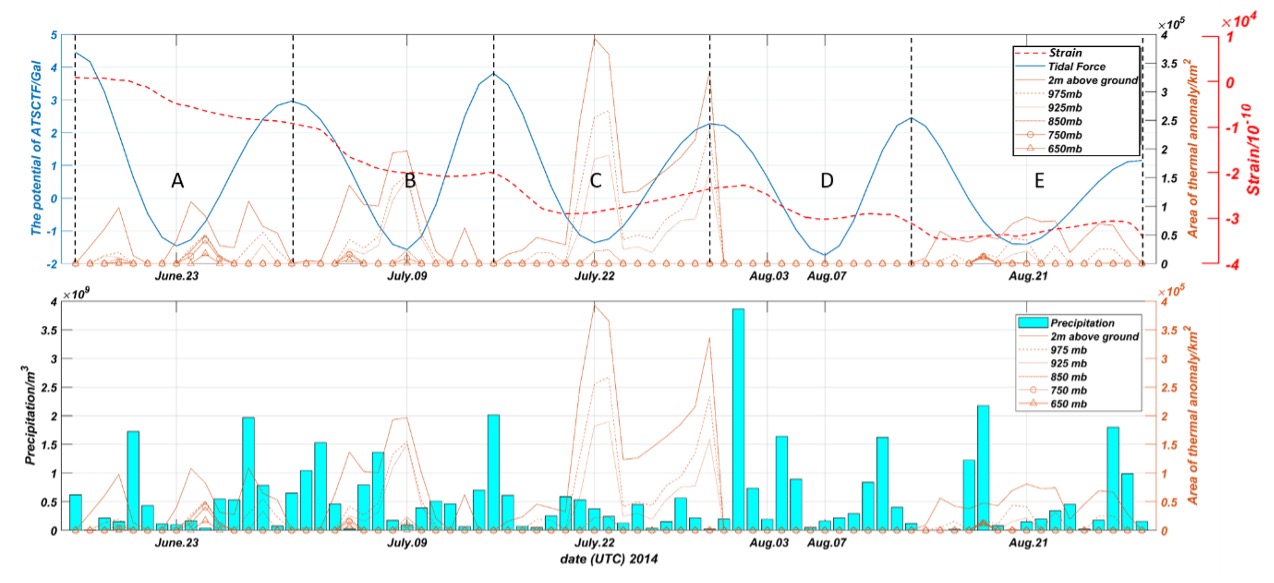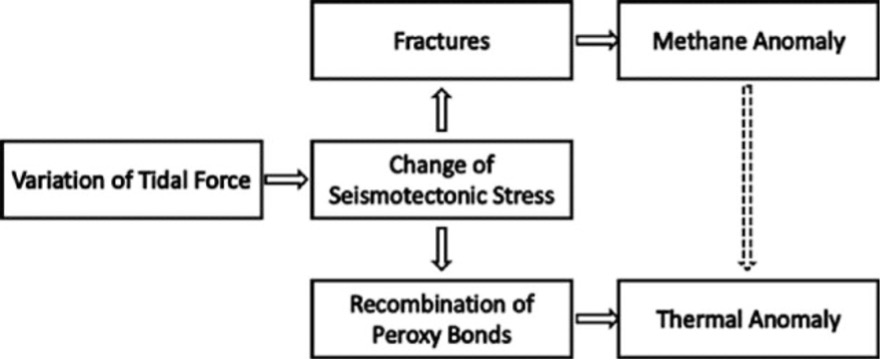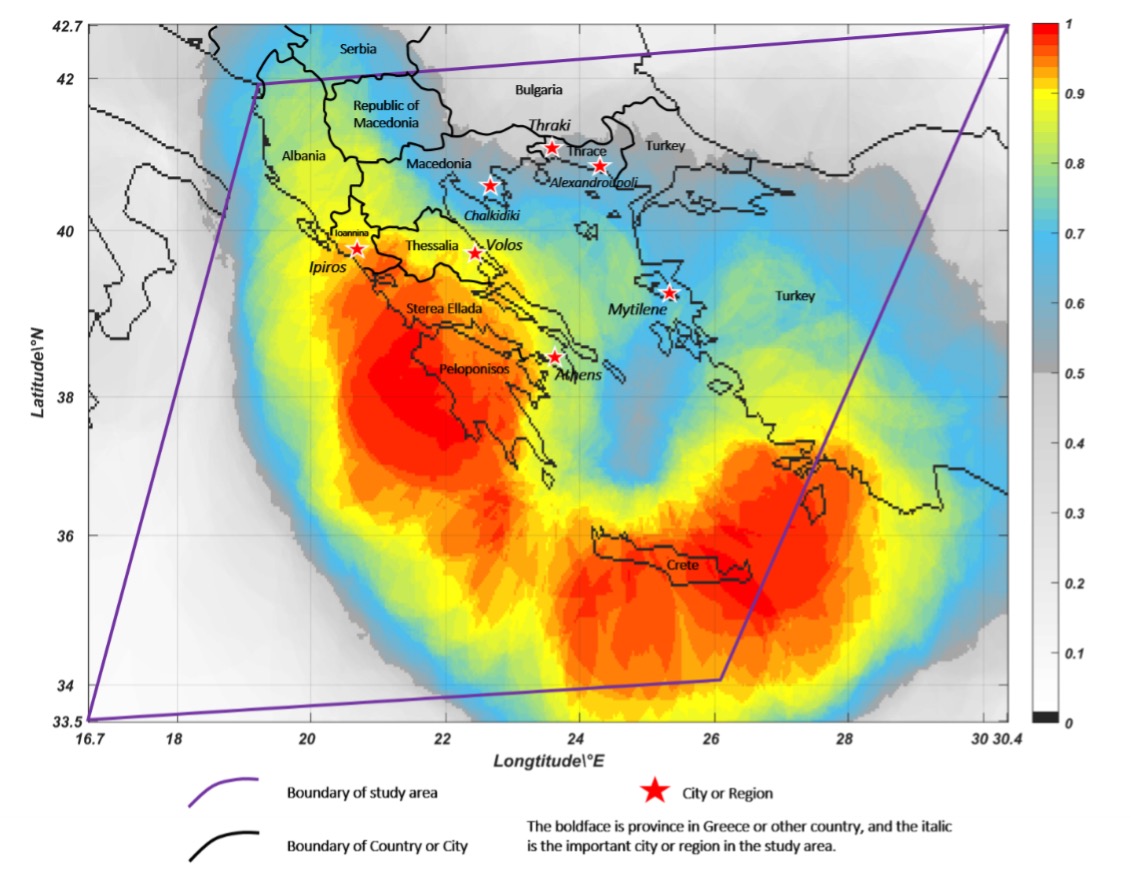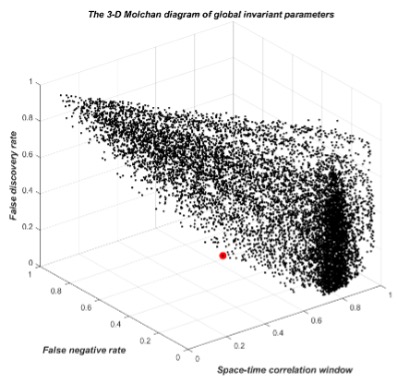Promising Results in Development of Seismic Infrared Remote Sensing
A research team led by Prof. Meng Qingyan from the National Engineering Laboratory for Satellite Remote Sensing Applications under the Aerospace Information Research Institute (AIR), Chinese Academy of Sciences (CAS), has published a paper on the Remote Sensing of Environment. The title of the paper is “Spatially variable model for extracting TIR anomalies before earthquakes: Application to Chinese Mainland”, and the first author is Dr. ZHANG Ying.
With the development of remote sensing technology, researchers have found anomalous enhancement of thermal infrared (TIR) or thermal signal before dozens of earthquakes. For example, using multiple air layer temperature data provided by National Center for Environmental Prediction (NCEP), we extract the spatial-temporal 3D variation of thermal anomaly of the Ludian Mw6.2 2014 earthquake.
The results showed that there is strong correlation between thermal anomaly and the variation of tidal force potential of the epicenter. Thermal anomalies are located on or near epicenters, and they generate from the bottom, spread upward, and disappear in the top layers.

Figure 1 The upper plot compares the anomalous area of several layers, the tidal force potential, and the surface strain of model YRY-4 four-component borehole strain gauge located at the Zhaotong observation station, while the bottom plot compares the area of the thermal anom aly and the precipitation.
Many mechanisms were proposed to describe the origin of TIR/thermal anomalies related to earthquakes, such as piezoelectric and elastic strain forces, rising well water levels, “peroxy defect theory” and so on. Researchers have explored the relationship between the thermal and methane anomalies associated with 2008 Wenchuan earthquake.
The results showed that the methane anomaly is unlikely to be the main cause of thermal anomaly because the lag between thermal and methane anomalies. The thermal anomaly is more likely to be related to the change in seismotectonic stress, and we can get a complete logic chain to describe the relation between tidal force, seismotectonic stress, earthquake, methane anomaly and thermal anomaly, as it is shown in the Figure2.

Figure 2 The relation between tidal force, methane anomaly and thermal anomaly.
Some researchers have conducted long-term statistical studies to prove the relation between earthquakes and TIR/thermal anomalies. For instance, Robust Satellite Techniques (RST) were used to extract TIR anomalies in the Sichuan region, however, the power of TIR anomalies for predicting earthquakes in this area is limited.
Long-term statistical studies to prove the correspondence between earthquakes and thermal infrared (TIR) anomalies have been conducted in Greece. After reanalyzing the above content, results showed that the original results confuse the positive predictive value (PPV) with false-negative rate (FNR). The temporal-spatial clustering of earthquakes and overly large temporal-spatial windows will also contribute to high PPVs, and it is improper to correlate TIR anomalies with earthquakes without excluding these influences. Long-term statistical evidence proving the correspondence between TIR anomalies and earthquakes is still absent.

Figure 3 The prior probability map for Greece from May 2004 to Dec. 2013.
This study offered rigorous statistical evidence to support the relation between earthquakes and TIR anomalies. we use daily Outgoing Longwave Radiation (OLR) data provided by the National Oceanic and Atmospheric Administration (NOAA) to conduct a long-term statistical between the TIR anomalies and the M≥4 earthquakes of Chinese Mainland from 2007 to 2017.
The results showed that the TIR anomalies in Chinese Mainland are statistically related to earthquakes. The introduction of a “heating core” can significantly remove the noise which are non-related to earthquakes. In the simulation and prediction experiment based on historical seismic data, the model showed a good prediction result, and it can be applied to earthquake prediction. At present, the problem to be studied is to improve the spatial and temporal prediction accuracy.
A new hybrid model based on seismic and non-seismic alarms was built to decompose the PPV of precursors into each spatial-temporal unit which is superior to the Poisson model.
The research provides a detailed technical process, quantitative evaluation method and a complete research paradigm for the study of the correlation between precursors and earthquakes.
It can be effectively migrated to other precursor research, and provides a original model for the operationalization of earthquake prediction based on precursors. It is helpful to break through the technical and methodological bottlenecks of precursor research and promote the development of earthquake precursor research.

Figure 4 Training results for the global invariant parameters, and the symbol marked by red is the parameter set with the lowest loss. In this figure, only the results for the 9738 models with P1≤0.05 and P2≤0.05 have been presented.
The research is supported by the National Key Research and Development Program of China (Grant No.2019YFC1509202)



News & Events